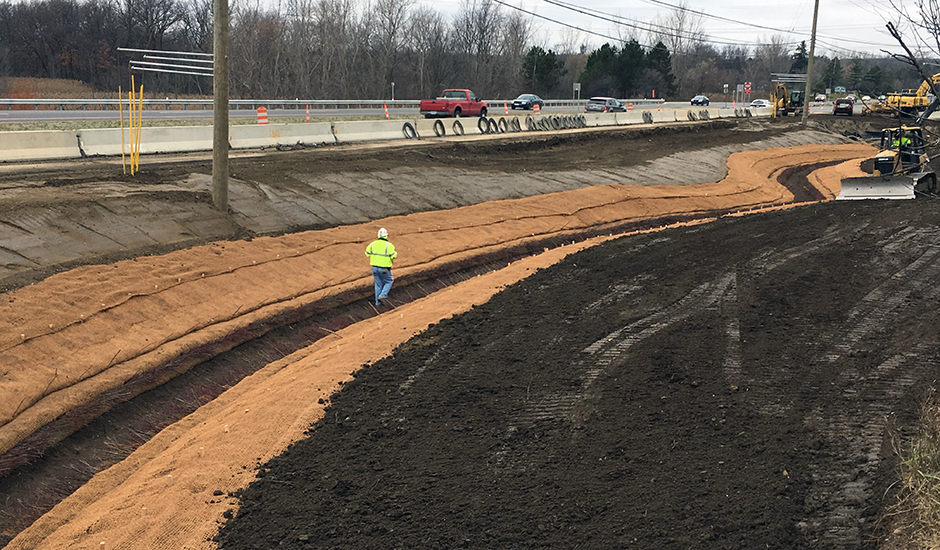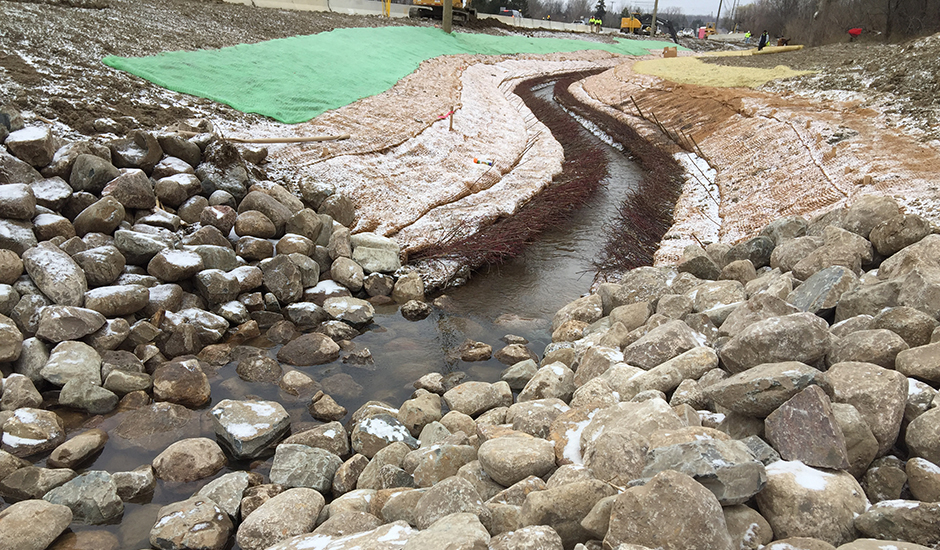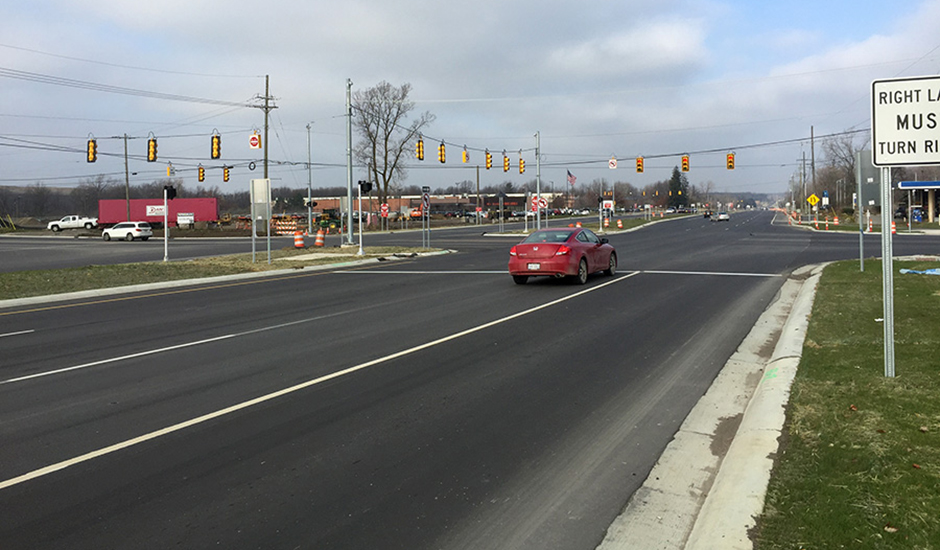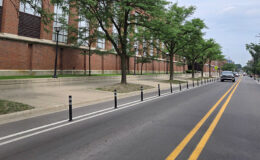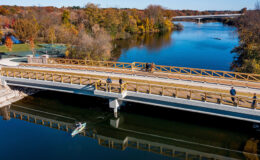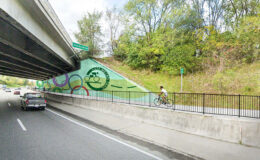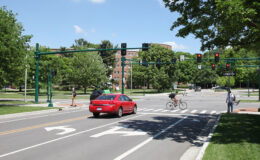Five miles of M-24 (Lapeer Road) in Oakland County have been repaired and resurfaced by the Michigan Department of Transportation (MDOT) to enhance rideability, longevity and traffic operations. With an average daily traffic use of 50,000 vehicles per day in some areas, this is one of the busiest stretches of state highway, extending from Harmon Road in the City of Auburn Hills to Goldengate Street in Orion Township. The $34 million project has restored the roadway and improved traffic flow through the corridor by changing how major intersections and turnarounds are configured.
Complete reconstruction of the Silver Bell Road and Clarkston Road intersections was designed to improve safety and operations. Through-lanes were added to M-24 and direct left-turns were eliminated at each intersection. Indirect left-turn lanes at adjacent crossovers (Michigan Lefts) were added to enable the corridor to operate as a true boulevard system and allow more time for through traffic to proceed through intersections. Right-turn lanes were also added in some areas to separate slow-turning traffic from higher-speed vehicles on the roadway.
Patching and resurfacing of the remaining portions of the roadway with hot-mix asphalt (HMA) has improved rideability and longevity. Geometric features were updated to current standards including shoulders, intersections, driveways and crossovers. In addition, the design enhanced connectivity of a safety path on the east side of the road, improved roadway drainage and water main, and added new traffic signals in a box-span configuration.
After the major roadway construction activities were completed, two water quality enhancements were constructed to complement the operational improvements, alleviate flooding issues and meet Michigan Department of Environmental Quality permit requirements. A natural stream channel was created parallel to M-24 to mitigate impacts on an existing stream from the road reconstruction and expansion. This type of enhancement is one of the first to be implemented by MDOT. In addition, a series of bioretention basins was installed to manage stormwater runoff from the roadway and capture the first flush of runoff from the contributing drainage areas.
The roadway fully opened to traffic in November 2016 and final site restoration and plantings are anticipated to take place in Spring 2017.

